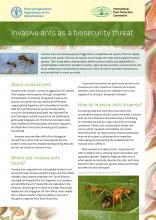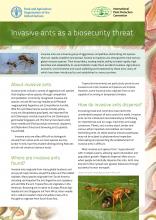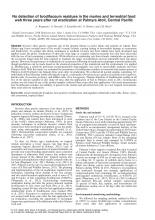No detection of brodifacoum residues in the marine and terrestrial food web three years after rat eradication at Palmyra Atoll, Central Pacific
Holmes, N.
,
Howald, G.
,
Shiels, A.
,
Wegmann, A.
2019
Invasive alien species represent one of the greatest threats to native plants and animals on islands. Rats (Rattus spp.) have invaded most of the worlds oceanic islands, causing lasting or irreversible damage to ecosystems and biodiversity. To counter this threat, techniques to eradicate invasive rats from islands have been developed and applied across the globe. Eradication of alien rats from large or complex island ecosystems has only been successful with the use of bait containing a rodenticide. While effective at eradicating rats from islands, rodenticide can persist in the ecosystem longer than the time required to eradicate the target rat population and can potentially harm non-target species. However, the persistence of rodenticides in ecosystems following rat eradication campaigns is poorly understood, though predictions can be made based on the chemical properties of the rodenticide and the environment it is applied in. Brodifacoum, a relatively persistent second-generation anticoagulant, was used to successfully eradicate rats from Palmyra Atoll. With this study, we evaluated the persistence of brodifacoum residues in terrestrial and marine species at Palmyra Atoll (Northern Line Islands) three years after rat eradication. We collected 44 pooled samples containing 121 individuals of the following: mullet (Moolgarda engeli), cockroaches (Periplaneta sp.), geckos (Lepidodactylus lugubris), hermit crabs (Coenobita perlatus), and fiddler crabs (Uca tetragonon). Despite detection of brodifacoum residue in all five of the species sampled in this study 60 days after the application of bait to Palmyra Atoll in 2011, brodifacoum residue was not found in any of the pooled samples collected three years after bait application. Our study demonstrates how brodifacoum residues are unlikely to persist in the marine and terrestrial food web, in a wet tropical environment, three years after rat eradication.








